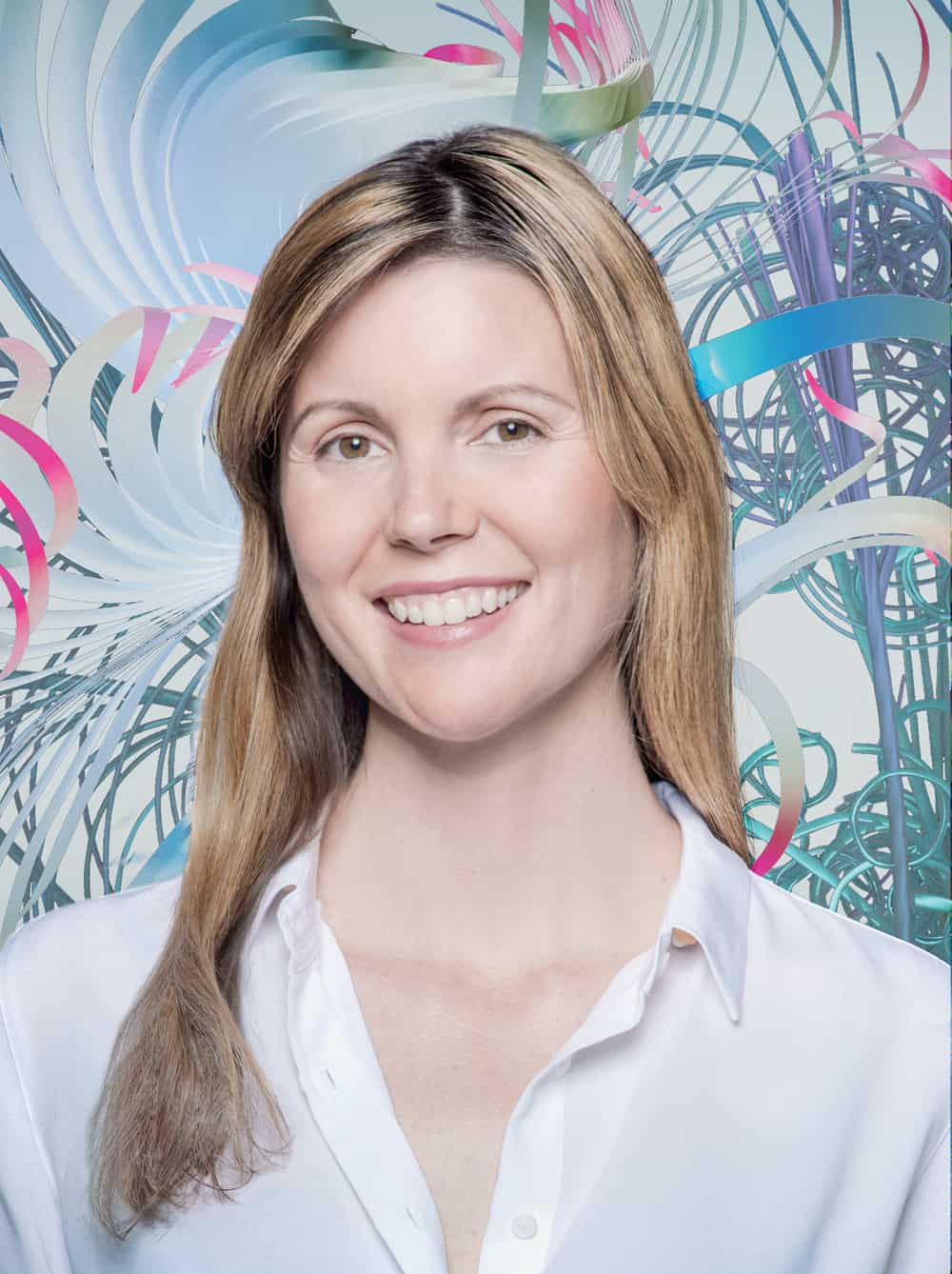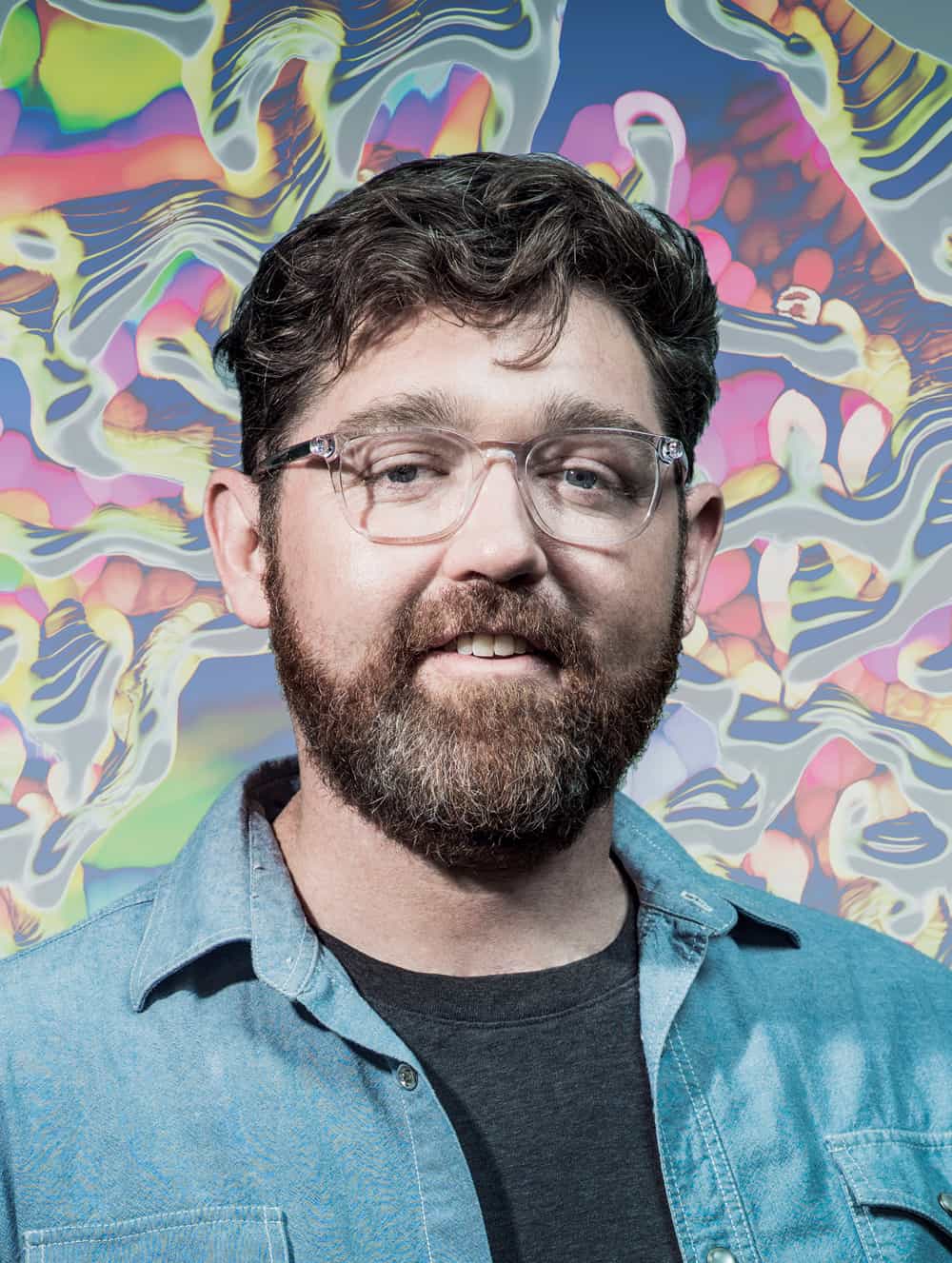As the premier water company that’s dedicated to celebrating artists, LIFEWTR’s Series 7 celebrates the intersection of art and technology. Meet the three talents using next-generation tools such as coding, data, visualization, 3-D printing, and enhanced reality to further the conversation.
1. Sara Ludy
How would you describe your work?
I’m interested in the nature of immateriality and how it occupies various spaces—architecture, nature, virtual, and the unconscious.
Where did you study?
The School of the Art Institute of Chicago.
We hear you explore everyday objects and transform them to find new meanings. Can you give us some examples of this?
I filter my everyday through various digital tools to create hybrid forms. For instance, going to a garden to 3-D scan plants for a VR world, or re-creating dream spaces in 3-D.
You’re known for your multimedia work. What areas do you work in?
I work with many mediums. Lately, I’ve been focusing on VR, sound pieces, glass sculptures, and paintings.
How would you describe your bottle design?
The bottle is a reflection of birds that exist in a virtual aviary. This aviary is part of a VR world I’ve been building for the past two years that’s somewhere in between being a studio, a sanctuary, and an extension of my apartment.
2. Andrew Benson
How would you describe your work?
My work is a wild experiment combining painterly gestures with digital process. I engage the fringes of graphics technologies, stripping away the gloss to discover a new way to relate to the digital image. I create unstable systems and surf them to create tense and dynamic compositions.
Where did you study?
I have a BFA in painting from San Francisco Art Institute, although I split my time there between painting and the design and technology departments. After school, I began working for [software development company] Cycling ’74, which has in many ways been an extension of my education.
Where do you find inspiration?
I’m inspired by geology and natural systems. I grew up in the Mojave Desert surrounded by traces of old volcanoes, huge rock upheavals, and have always been fascinated by the ways these dynamic events leave their trace and shape the environment. I’m also inspired by the awkward relationships that form among computers, technology, and ourselves.
How has technology made you a better artist?
Technology is a kind of collaborator that challenges me to learn things I wasn’t ready to learn, forces me to adapt my ideas, and lets me set up arrangements that could never happen mechanically in the real world. You could say my work is augmented by technology, but at this point, I wonder if I am the augmentation. I like to think that I’m improving the technology by my opinionated interactions.
How’d you go about creating your LIFEWTR bottle?
The design captured a moment in time, as a feedback system was running on my computer. I had come up with a process where each pixel compares its brightness to its neighbors and moves in the direction away from the brightest point. This is combined with a process that tries to guess which direction each area of the image is traveling, and another one that tries to treat the image like an elevation map and creates shadows and light. This is all fed back to the input of the process, and the result is a vibrant, fluid-like movement.
What’s it like having your work on a bottle of water?
First of all, I love how my bottle looks, and I feel good holding it and seeing the design when I spot it. I get messages every day from people who found my bottle somewhere. Some of them are strangers who just randomly got into it. Regardless, it makes my day. I’ve had videos on TV before, but the scale of having art on a bottle of water is just mind-boggling to me.
How much water do you drink every day?
I live in Southern California, which is a pretty dry climate, so I’ve got to stay super hydrated. I usually drink a minimum of two liters a day.
3. Zach Lieberman
How would you describe your work?
I work as a teacher and artist, and I’m interested in using code to make poetry. In particular I love to write code to make animation and explore how motion can create emotion. A lot of my forms are graphical, organic, and a bit absurd. I am also fascinated with augmented reality and how we can create ambiguous images that ask our brains to do more work.
You’re at the forefront of computer graphics and human-computer innovation. Can you tell us a little more about what that means?
I make art, but I also help create open-source software, using a toolkit called openFrameworks, that helps other artists and designers make work. I love open-source because it allows us to take the things that we learn as artists and publish them in the form of reusable tools that helps the community grow. Most people think of art as a solitary experience but open-source art practice is incredibly social. I think it’s important to think of art more like R&D and that as artists we are imagining different possible futures.
Your Instagram account is pretty spectacular. What kind of posts do people respond to the most?
Thanks! I post sketches daily. It’s often hard to say what resonates or doesn’t with people, but what I love is seeing how things I like don’t really move the public or something I don’t care about captures their attention. That mismatch is interesting. As an artist, it’s hard to see how people see your work; sharing daily allows you more insight into that.
When did you realize you were a creative person?
When I was a kid I used to tool around in the basement and make abstract sculptures. I love assembling random things, and some of my favorite memories were my parents taking me to museums. I fell in love with art, and I studied fine arts as an undergraduate, spending all my time in the print shop. Using computers came accidentally since I had to get a job and all my friends were talking about web design and Y2K.
How did working with LIFEWTR come about?
I was approached by curator José Falconi and the LIFEWTR team to make some potential designs for the series. Since I’ve been active in printing my artwork recently, it was pretty natural and I had some ideas about what forms might look nice. What was lovely was to see how well they translated my work to the bottle, including subtle printing techniques. Overall it’s been amazing to share my art with the world this way.
How did you go about creating the bottle?
I have sketches that involve extruding a blob-y form in 3-D and I generated high res stills from those sketches. As an artist who works primarily with motion, almost 95 percent of what I post on Instagram is movement, it’s a challenge to try to find the right “moment.” I feel almost like a wildlife photographer watching a wild beast and I just tried my best to capture that energy in form in a series of stills. Then the LIFEWTR team mocked it up and made the label.
What was your reaction when you got your hands on the finished product?
I was overjoyed. As an artist, it’s really surprising to see your work in a new way, whether it’s printed, moving, on a large screen, in VR, or on a bottle. Every new perspective shows you some potential. Also one thing I love is people sending me product shots as they encounter the bottle in the wild. I feel really proud.
What’s your favorite app?
I have a ton of apps I love and use daily, but nothing beats walking around with my dog.
Read the complete new issue of The Daily Summer below!
Subscribe to our newsletter and follow us on Facebook and Instagram to stay up to date on all the latest fashion news and juicy industry gossip.







